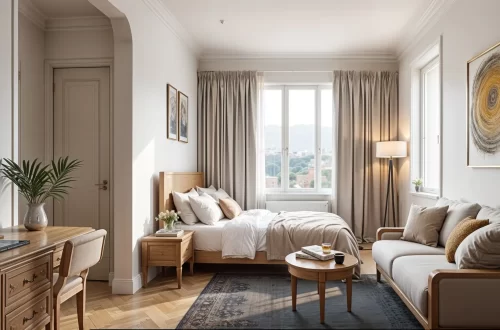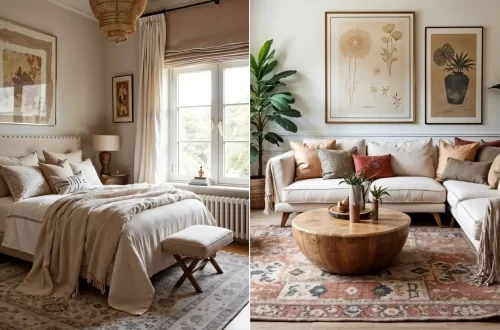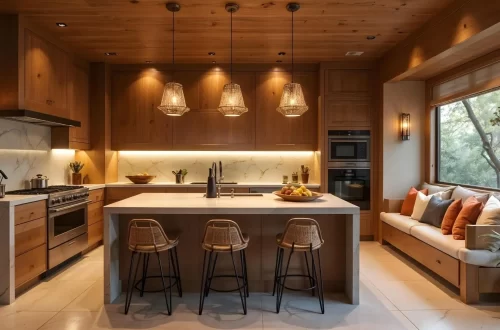Wabi-sabi style is quiet yet soulful, put together yet a little undone. As I layered its philosophy into my home, I started seeing all the ways it echoes African interiors. The love of raw textures, the reverence for timeworn pieces, the presence of nature in every room.
These two aesthetics don’t just coexist: they truly complement one another. So, I went on a journey to explore their gorgeous fusion of calm and craft. I hope you enjoy the results.
In This Article:
- What Wabi-Sabi Style and African Interiors Have in Common
- Why Mix African and Wabi-Sabi Styles?
- Wabi-Sabi Style with an African Touch—Room by Room
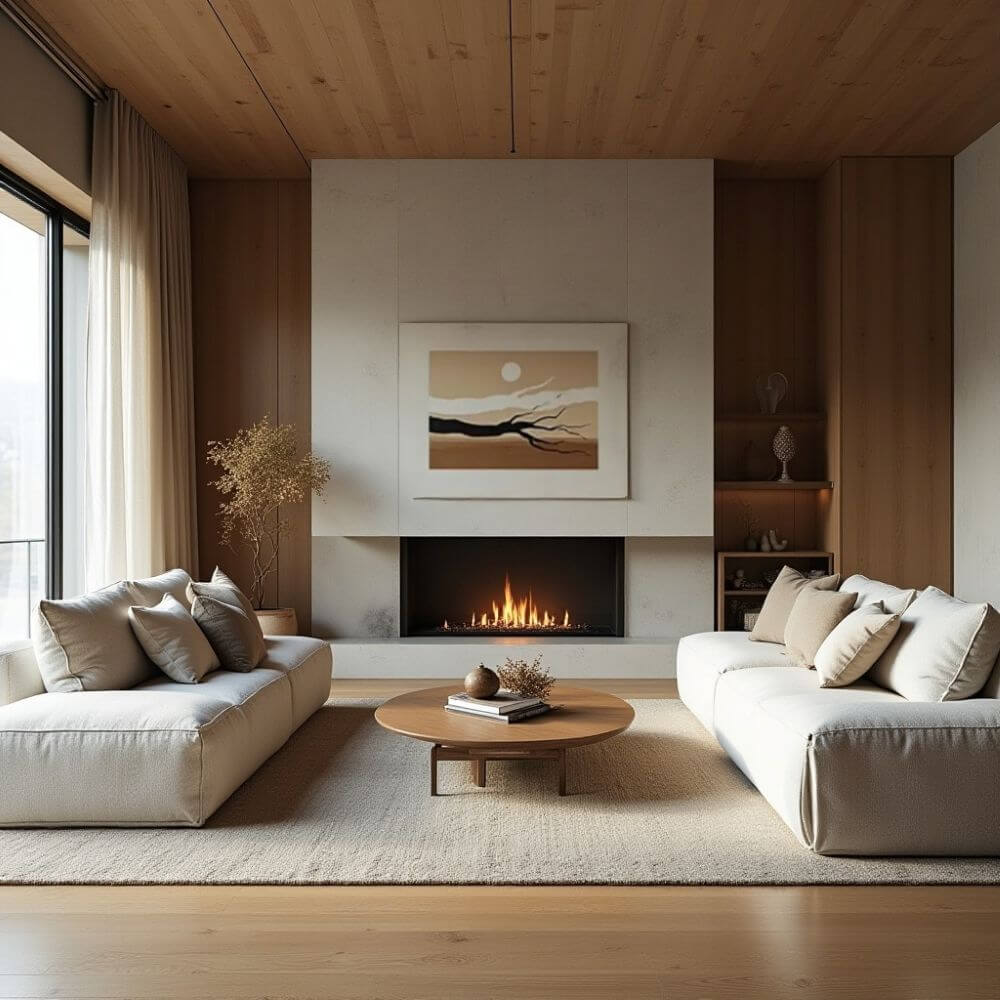
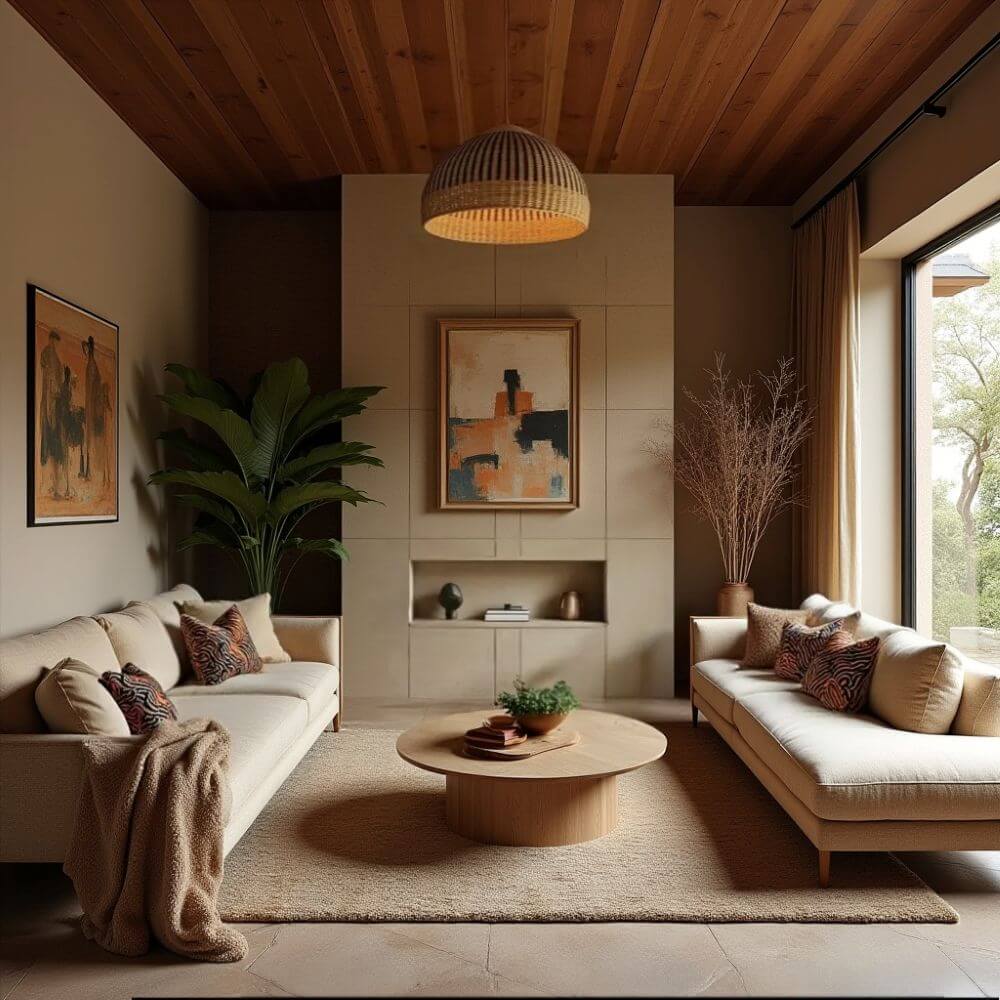
What Wabi-Sabi Style and African Interiors Have in Common
Wabi-sabi style and African interiors share five core pillars.
1. Natural Materials
Wood, clay, linen and dried grass make them come to life.
Wabi-sabi loves things that are raw and real. So does African design. Whether it’s a carved stool or a handwoven basket, the materials are always what anchors these aesthetics.
2. All the Earthy Colors
Wabi-sabi lives in soft tones—taupe, beige, greige, and charcoal.
African interiors often turn that up a notch, adding in rich browns, burnt orange, deep terracotta. Still grounded, just with a bit more heat.
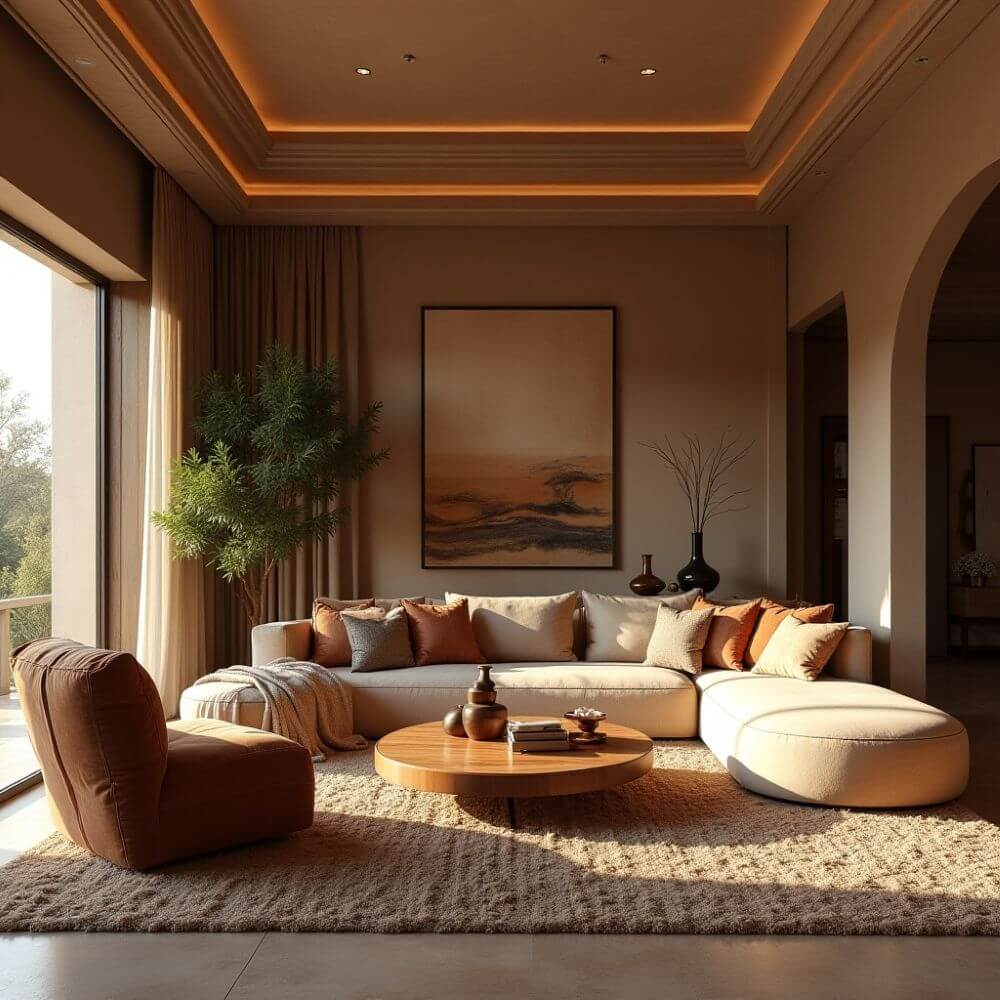
3. Imperfect is Perfect
In wabi-sabi style, a crack or uneven edge isn’t a flaw—it’s what makes the charm.
Same with African decor. A hand-shaped bowl or ancient textile feels more alive than anything machine-made. Each object should feel collected and unique.
4. Minimalism, But Cozy
Wabi-sabi and African interiors both believe in keeping things simple—but warm. You don’t need much. Just a few honest, beautiful pieces that speak for themselves.
No half-empty rooms or cold white walls.
5. A Love for Things with Age
Wabi-sabi sees beauty in things that are a little worn down: a faded pottery, a chipped wooden table.
That idea runs deep in African homes too. Artifacts, handmade pieces, and heirlooms are not only welcome: they are needed.
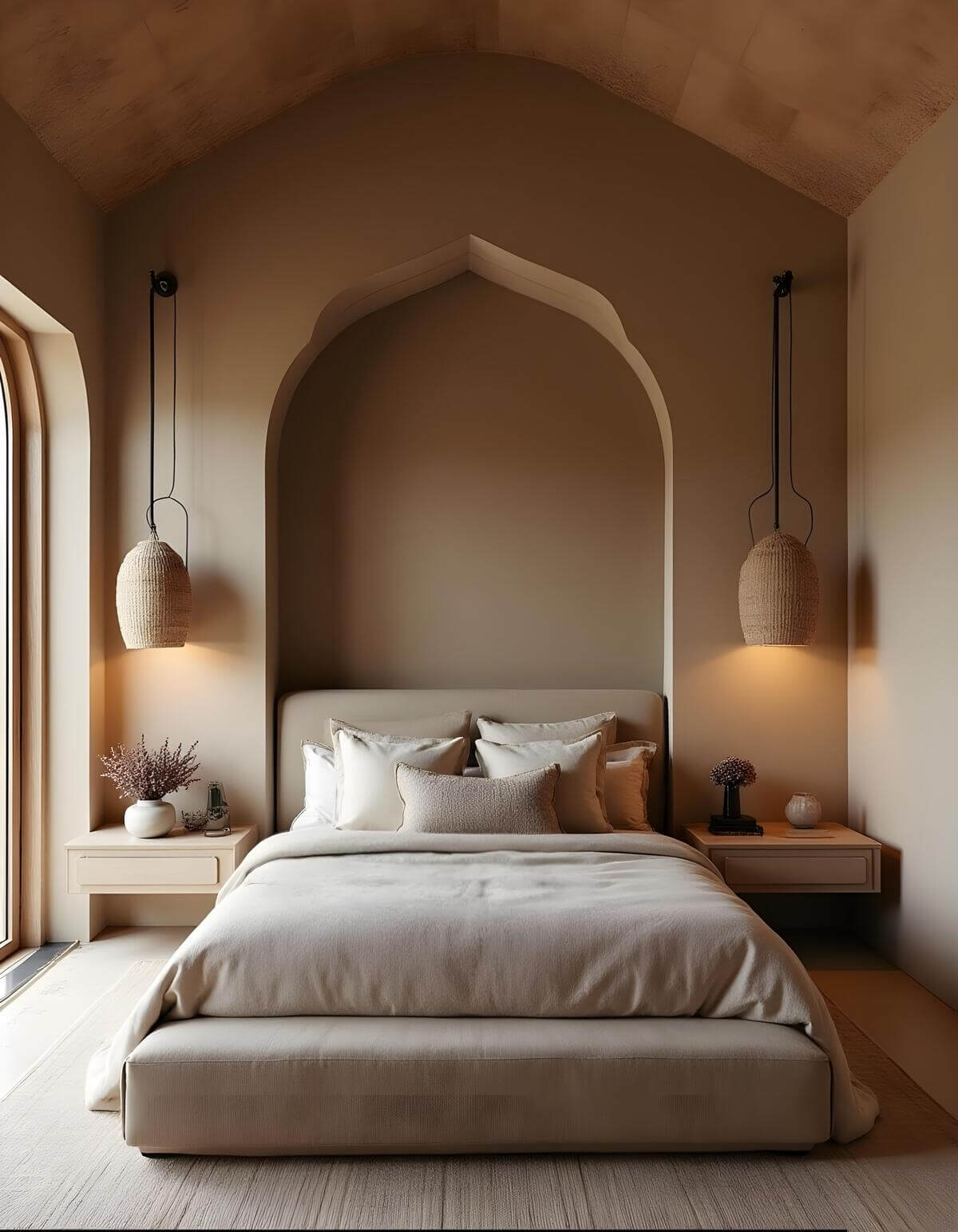
Why Mix African and Wabi-Sabi Styles?
Because together, they just work.
Where wabi-sabi style brings serenity, African design brings warmth. Where one is subtle, the other adds soul. And that contrast makes interiors feel personal and authentic.
Want to experiment? Try one of these:
- Keep a neutral base, then layer in a bold accent—like a kuba textile or unique stone sculpture.
- Balance calm with intrigue: a minimal room made unexpected with an oversized painting or wall hanging.
- Use the quiet of wabi-sabi to spotlight striking African pieces such as traditional masks.
It doesn’t need to be perfect. That’s the whole point.
Wabi-Sabi Style with an African Touch—Room by Room
Let’s take this aesthetic pairing and walk it through the home.
Entryway
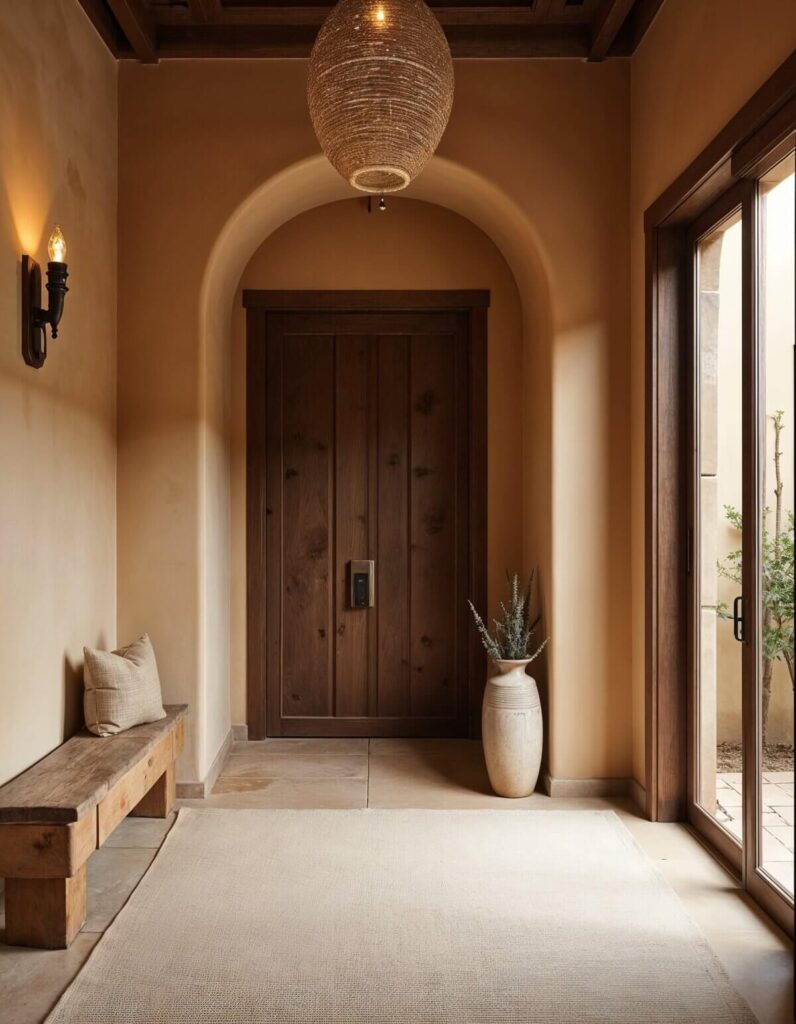
Keep it light and grounded.
Start with a wooden bench that’s a little worn in (that patina is a win). Add pillows in soft, natural tones. A woven pendant overhead adds texture.
Finish with a simple rug, a leafy plant, and a soft glow from a wall sconce.
Living Room
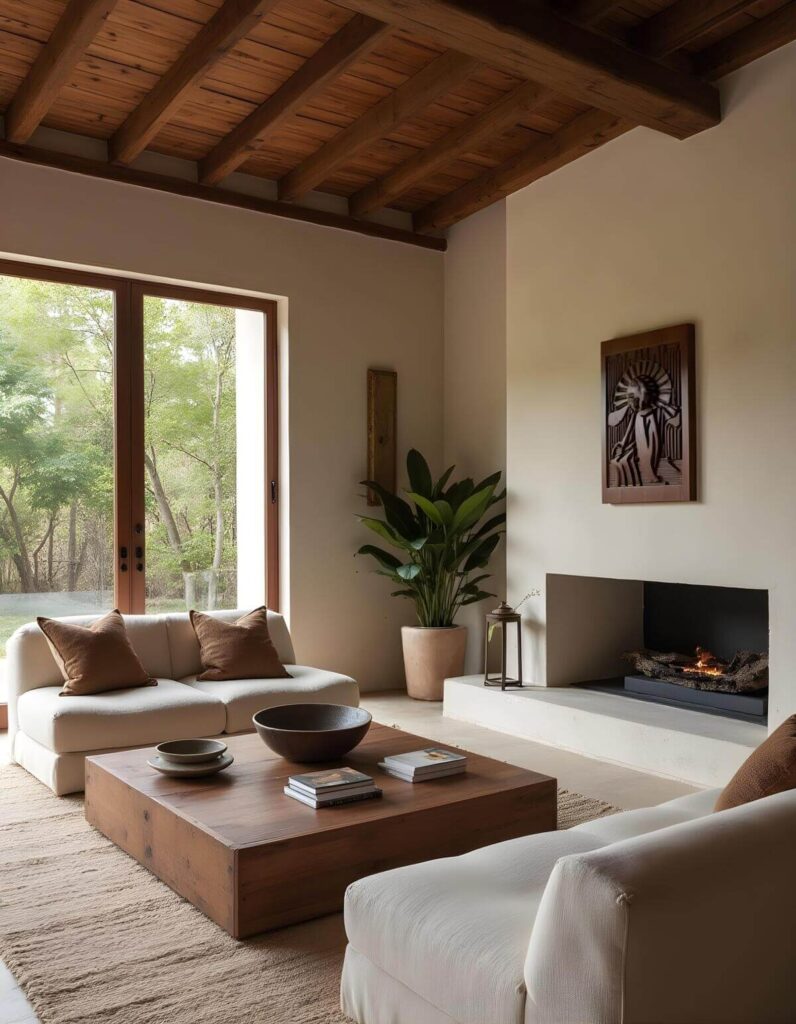
Let it feel relaxed and collected.
Go for a low, cushiony sofa in linen or cotton. A chunky wood coffee table. Maybe a carved bowl or tray from West Africa on top.
Keep the palette soft, but don’t be afraid of deep browns or black wood accents. They add a welcome contrast.
You May Also Like: 5 African Living Room Decor Ideas for a Beautiful Organic Vibe
Dining Room
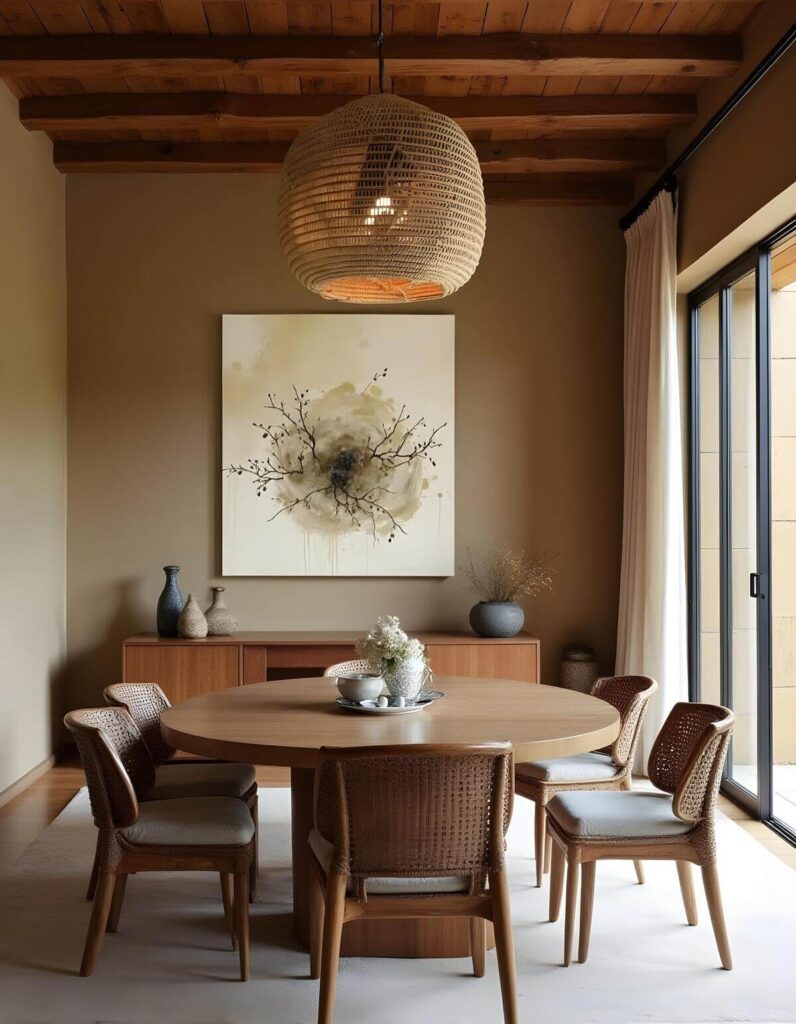
This space is elevated and all about feel-good materials.
Choose a table with curves or an organic edge. Hang a pendant made from raffia above it.
You can add a simple textile or art piece on the wall to bring in some subtle elegance.
Bedroom
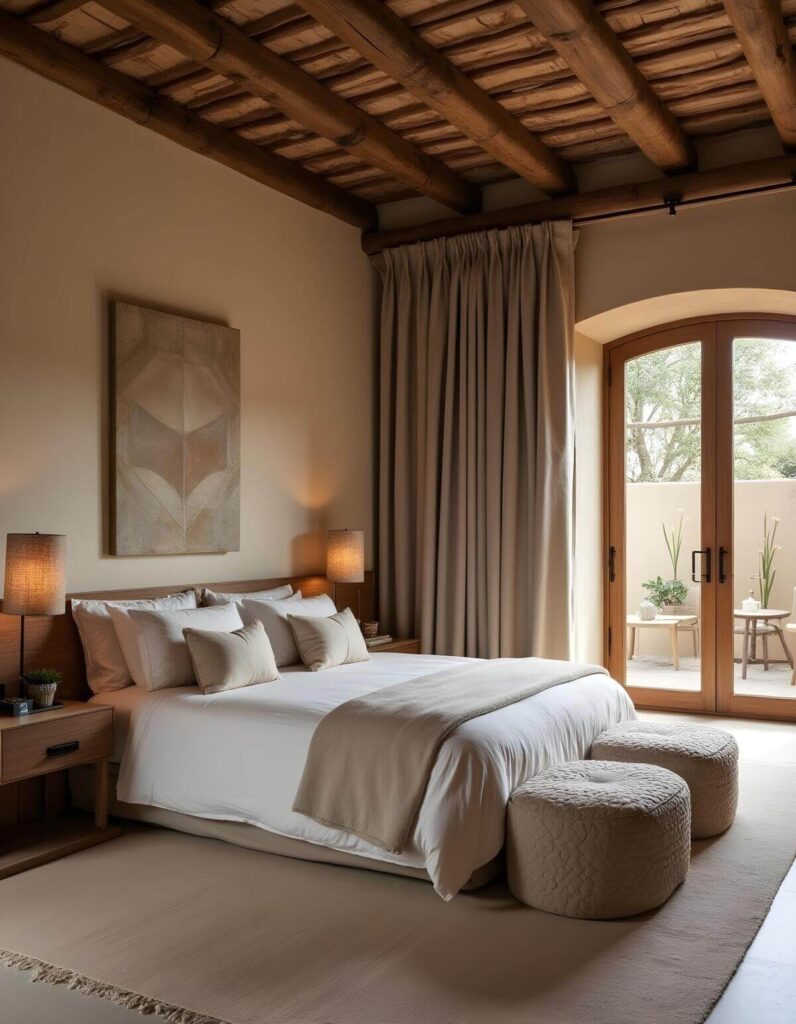
Soft, quiet, and layered.
Stick with beige, taupe, or muted sand tones for your bedding. Add texture with linen throws or cotton blankets.
Wall sconces in linen or ceramic keep the light soft. Two poufs at the foot of the bed make the room feel grounded.
Above the bed, a minimalist African art piece brings it all together.
You May Also Like: An Expert 7-Step Guide to Chic African Bedroom Decor
Home Office
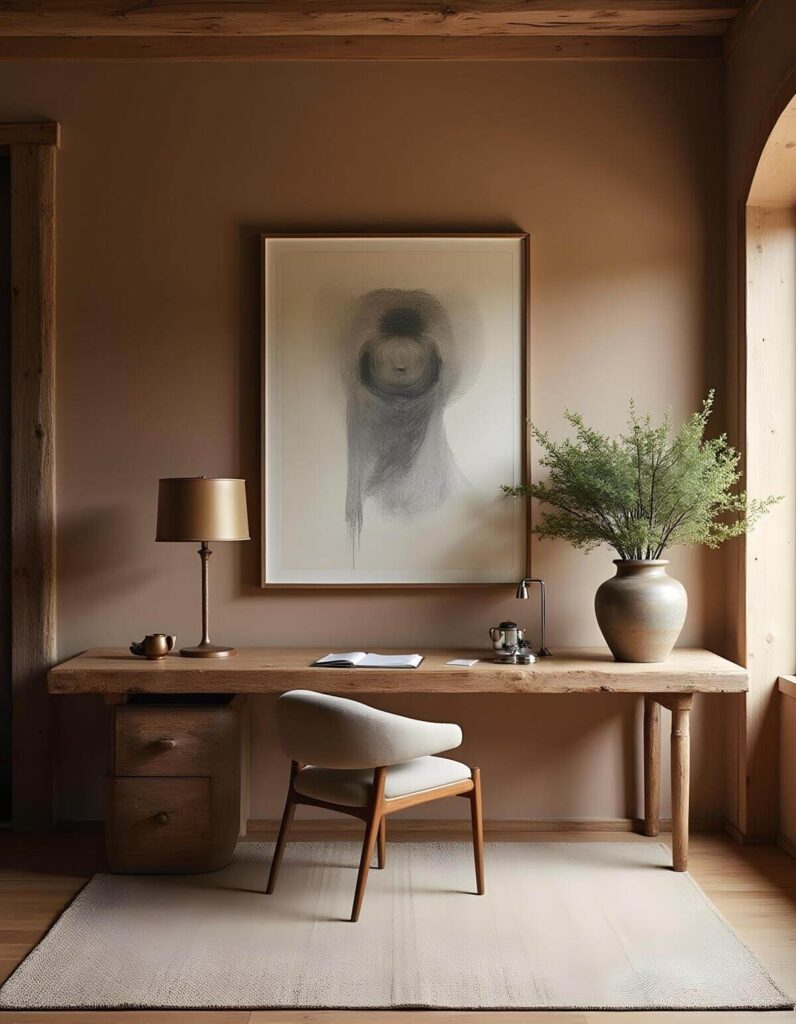
This one’s personal. Let it reflect your creativity style.
Go deep on your wall color—something earthy like ochre or taupe. Add a solid wood desk, preferably one that’s vintage or made with reclaimed wood.
Pair it with a cozy chair in boucle or velvet. A soft rug and one or two meaningful objects finish the look.
You May Also Like: An Expert 7-Step Guide to Chic African Bedroom Decor
Wabi-sabi style isn’t about perfection. And neither is African design.
They both invite you to slow down. To feel. To live with objects that have life in them.
Pairing them might just be the calming and soulful reset your space (and spirit) needs.
Continue Reading: Afro Japandi Living Room: How to Create a Luxurious Space



